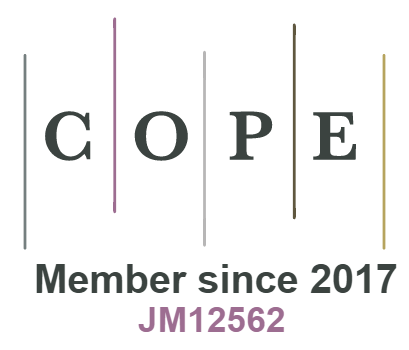Narrow Band Gap Ternary Absorber Layer for Solar Cell for Small Business Enterprises in Equatorial Africa
DOI:
https://doi.org/10.18034/ei.v5i1.175Keywords:
Solar cell, small business enterprise, energy demand, CdxZn1-xS, Band gap, resistivity, Open Voltage, VIS - NIR regionAbstract
According to recent studies, on the Daily nation newspaper, in Kenya of 6th January 2017 featured the story, the number of people doing the same thing in surrounding villages was so high that many of them had to leave their phones behind at the charging centre (for up to three days) before returning to pick them. To fight darkness, up to 80 percent of Africans depend on personal generators, candles and kerosene (paraffin) lamps to provide basic lighting. Let’s not even talk about all the other things we desperately need electricity for – iron clothes, pump water, charge mobile phones etc. In this article, we shall focus on the types of solar cell materials that can be used to fabricate solar cell to be installed on roof tops to generate electricity used by individuals and households. Photovoltaic devices are used to convert solar radiation energy into electrical forms of energy for various uses. Current research is geared towards using thin films with wide band gaps to allow optimum penetration of radiation within the VIS - NIR region. Inorganic wide band gap, CdxZn1-xS thin films and narrow band gap, PbS thin films were optimized through chemical solution technique in this study. Wide band gap thin films of CdxZn1-xS were grown at about 820C while those of narrow band gap thin films of PbS were grown at room temperature utilizing aqueous conditions. Their optical constants were investigated and found to be suitable for solar cells applications.
Downloads
References
Amusan, J., Fajinmi, G. and Sasusi, Y. (2007). Deposition time dependence on absorptivity of chemically deposited lead sulphide thin films. Research Journal of Applied Sciences, 9: 931-937.
Bacaksi, E. and Cevik, U. (2006). K-shell fluorescence yield of Cd and Zn in Cd1-xZnxS thin films on the structural, optical and electrical properties of MW-CBD CdZnS thin films. American Journal of Nanotechnology, 123: 1-5
Chouldrury, N. and Sarma, K. (2008). Structural characterization of nanocrystralline PbS thin films: synthesised by CBD method. Indian J. of Pure and Appl. Phys, 46: 261-265.
Dzhafarov, T., Ougul, F. and Karabay, I. (2006). Formation of CdZnS thin films by Zn diffusion. J. Phy. D: Appl. Phy. 39: 3221-3225
Eshafie I. and Ekpunobi, A. (2004). Optical properties and band offsets of CdS/PbS superlattice. The Pacific Journal of Science and Technology,11: 404-407.
Gaewdang, N., Gaewdang, T. and Lipar, W. (2004). Some characterization of chemical bath co-deposited CdS/ZnS thin films. Technical Digest Inter. PVSEC, 14: 124 -126
Ghamsari, M. and Khosravi, A. (2005). The influence of hydrazine hydrate in the preparation of lead sulphide thin film. Iranian J. of Sci. & Technology, 29: 151- 162.
Journal of Science and Technology, 8: 155-161
Kasim, U., Narayanan H.and Anthony, O. (2008). Optimization of process parameters of chemical bath deposition of Cd1-xZnxS thin films. Leonardo Journal of Sciences, 12: 111-120.
Kumar, T. and Sankaranarayanan, S. (2009). Growth and characterization of CdZnS thin films by short duration microwave assisted chemical bath deposition technique. Chalcogenide Letters, 6: 555- 562
Mosiori, Cliff Orori; Njororge, Walter Kamande; Okumu, John (2014); Optical and Electrical Properties of PbS Thin Films Grown by Chemically Bath Deposition [CBD] at Different Lead Concentrations,- International Journal of Advanced Research in Physical Science (IJARPS) Vol. 1, Issue 1, pp 25 – 32.
Mosiori, Cliff Orori (2013); Effect of Dielectric Constant on Energy Losses in Lead Sulphide Thin films grown by Solution method at room temperature - International Journal of Physical Sciences - ISSN 1992 - 1950, Vol. 8 (34), pp. 1716 – 1721.
Mosiori, Cliff Orori, Njoroge, Walter N. and Okumu, John (2014), Electrical and optical characterization of CdxZn1-xS thin films deposited by chemical bath deposition in alkaline conditions; Direct Research Journal of Chemistry and Material Science (DRCMS) Vol.2 (1), pp. 13-20, ISSN 2354-4163
Mulik, R., Pawar, S., More, P., Pawar, A. and Patil, V. (2010). Nanocrystalline PbS thin films: synthesis, microstructural and optoelectronic properties. Scholars Research Library, 2: 1-6.
Osherov, A., makai, J., Balasz, J., Horvath, Z., Gutman, N., Amir, S. and Golan, Y. (2010). Tunability of optical band edge in thin PbS films chemically deposited on GaAs (100). Journal of Condensed Matter, 22: 1-7.
Oztas, M. and Bedir, M. (2005). Some Properties of Cd1-xZnxS and Cd1-xZnxS(In) Thin Films Prepared by Pyrolytic Spray Technique. Journal of Applied Sciences, 4: 534-537.
Patil, R., Lisca, M., Stancu, V., Buda, M., Pentia, E. and Botila, A. (2006); Crystalline size effect in PbS thin films grown on glass substrates by chemical bath deposition. Journal of Optoelectronics and Advanced materials, 1: 43-45.
Pentia, E., Pintilie, L., Matei, I., Botila, T. and Ozbay, E. (2001). Chemical prepared nanocrysalline PbS thin films. Journal of Optoelectronics and Advanced Materials, 3:525 – 530.
Popa, B., Ray, S. and Barma, A. (2006). Properties of chemically deposited PbS thin films. Jorn. of Appl. Physi. 21: 43-45.
Popescu, V., Jumate, N., Popescu, G., Moldovan, M. and Prejmeriean, C. (2010). Studies of some electrical and photoelectrical properties of PbS films obtained by sono-chemical methods. Chalcogenide Letters, 7: 95-100.
Ravindran, N., Ganapathy, P. and Choi, J. (2006). Energy gap refractive index relations in semiconductors – An overview. Elsevier Thin Solid Films: Infrared Physics & Techn. 50: 21-79
Saliha, I., Muhsin, Z., Yasemin, C. and Mujdat, C. (2009). Optical characterization of the CdZn(S1-xSex)2 thin films deposited by spray pyrolysis method. Optica Applicata, XXXVI: 1-9.
Seghaier, S., Kamoun, N., Brini, R. and Amara, A. (2006). Structural and optical properties of PbS thin films deposited by chemical bath deposition. Elsevier Materials, Chem. & Physics, 97: 71-80.
Song. J., R. Thapa, R., Maity, K. and Chattopadhyay K (2005). Optical and dielectric properties of PVA capped nanocrystalline PbS thin films synthesized by chemical bath deposition. Thin Solid Films, 211: 14–21
Ubale, A., Junghare, A., Wadibhasme, N., Darypurkar, A., Mankar, R. and Sangawar, V. (2007). Thickness Dependent Structural, Electrical and Optical Properties of Chemically Deposited Nanopartical PbS Thin Films. Turk. J. Phys., 31: 279 – 286.
Valenzuela, J., J´auregui, R., Ram´ırez-Bon, A., Mendoza-Galva´n, M. and Sotelo-Lerma, A. (2003). Optical properties of PbS thin films chemically deposited at different temperatures. Thin Solid Films, 441: 104–110.
Vidhya, Y., and Velumin, A. (2009). Electrical characterization of chemically deposited thin films under magnetic field. Phys. Stat. Sol. 167: 143-151
--0--
Published
Issue
Section
License
Engineering International is an Open Access journal. Authors who publish with this journal agree to the following terms:
- Authors retain copyright and grant the journal the right of first publication with the work simultaneously licensed under a CC BY-NC 4.0 International License that allows others to share the work with an acknowledgment of the work's authorship and initial publication in this journal.
- Authors are able to enter into separate, additional contractual arrangements for the non-exclusive distribution of the journal's published version of their work (e.g., post it to an institutional repository or publish it in a book), with an acknowledgment of its initial publication in this journal. We require authors to inform us of any instances of re-publication.









